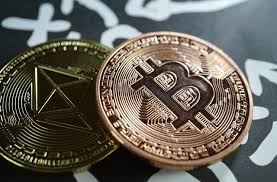Blockchain development is an ever-expanding space. In what feels like a daily occurrence, new projects and networks appear that claim to offer faster performance or new functions, unlike anything we’ve seen before.
Whether or not those claims are true, the existence of multiple blockchain networks requires developers to consider the benefits and disadvantages of each one before building a decentralized application (DApp). And, more times than not, developers are locked to their network of choice from inception onward.
A vital decision
Building a DApp is no easy task. A development team must learn one or more programming languages, work around sandbox environments and virtual machines and build smart contracts of various complexities. All of this aside, it’s vital to consider which networks have or are most likely to attract a substantial pool of users.
For example, Ethereum (ETH) is slow and expensive compared to most modern networks, but it has a powerful virtual machine, the Ethereum Virtual Machine (EVM), and more users than many of its competitors. Ethereum even has its own application standard established by the World Wide Web Consortium (W3C). Other networks, like Polkadot (DOT), might be faster and more powerful on a functional level but are lacking Ethereum’s vast user base.
The industry is at a point where DApps are classified as Ethereum or non-Ethereum DApps, and interoperability is difficult, but developers won’t let that stop them. In fact, some are working to build virtual machines and smart contracts that support both Ethereum and their network of choice.
A possible solution
One project aiming to solve this developmental divisiveness is ParaState, a DAO building a WebAssembly (WASM)-based virtual machine that’s compatible with Ethereum (eWASM) as well as Polkadot.
Essentially, smart contracts developed and deployed with the ParaState eWASM solution are compatible with Ethereum from the start. From there, developers can simply drag and drop them into Polkadot.
By providing such streamlined interoperability, developers don’t need to learn multiple programming languages or stick to one platform. Instead, they can focus on development first and worry about network deployment later.
Not only this, but DApps built with the eWASM VM meet all the standards established by the W3C, ensuring developers have one less thing to worry about when it comes to technical proficiency.
Perhaps most notable, however, is that the platform works with already existing DApps as well. Developers can easily bring their Ethereum-based projects over to Polkadot utilizing this solution, and the opposite is also possible. ParaState also wants to support other blockchain networks in the future.
While ParaState supports current languages like Solidity, it has been designed to be “future-proof” in that it supports RUST and other smart contract languages. However, ParaState is only as good as the developers that work on it, and one such DApp, Geminis Network, is looking to bring built-in Ethereum compatibility (eWASM + EVM) under one platform to all Polkadot parachains.
The parachain dilemma
To accomplish this, Geminis Network, which is proud to call itself the first parachain supported by ParaState’s advanced technological stack, is attempting to earn a slot in Polkadot’s crowdloan auction.
Winning the auction is based on the votes of both the Polkadot and ParaState communities, and if they’re voted in, Geminis Network will earn a slot as one of Polkadot’s prominent parachains and funding via the crowdloan method.
The Geminis Network shares some insight on the matter, stating, “Geminis Network Network needs the support of the ParaState and Polkadot community, the holders of DOT. True to the ethos of decentralized governance, your vote can help the Geminis Network Network become a Polkadot parachain. By exercising your right to vote for the Geminis Network Network parachain in the Polkadot crowdloan auction, you are enabling the technology that is making it easier for developers to build the applications and infrastructure of high-performance blockchains.”

Comments
Post a Comment